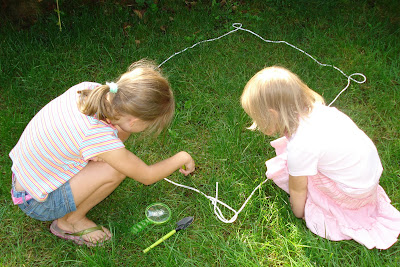I’ve just started ‘proper’ homeschool with my eldest dd, Sophie, this September. I’m so excited about it, partly because I’ve spent so many years researching and preparing for this moment that it’s a relief to finally be able to start!
In this next series of posts I’d like to talk about how we as a family ended up deciding to homeschool, what the options are available for those of us living overseas, and how we might respond to locals, as well as friends and family back home, when they ask, usually with a certain degree of incredulation, the question ‘Why do you homeschool your children?’.
This first post will look at some of the schooling options available to those of us living overseas, and some of the pros and cons of each, at least how we see it.
1) International English-speaking school
If you live in a capital city, or a fairly large, main city in the country in which you’re currently based, you may have such a school near by. Often such schools are also Christian-based or sponsored by various ‘M’ organisations. The advantages of such a school are clear: lessons in English, Christian teachers and perhaps Christian curriculum, cementing friendships with other ex-pats and ‘Third Culture Kids’, who understand your child better than local children ever will. Certain drawbacks, however, include: teachers may be short-termers and sometimes positions are left unfilled, the curriculum may be American, and faimilies from countries such as Britain and Australia may find a few differences they might like to keep abreast of in order to help their children better integrate into the school system back home eventually. Also, children will have less exposure to local language and culture, which may or may not be a problem depending on the parents’ wishes and values, and ex-pat families tend to ‘come and go’ more frequently, forcing your child to get used to saying ‘goodbye’ to close friends fairly regularly.
2) Boarding school in home country or some distance away from the town in which you’re currently living
Such schools will obviously give your children a good education, and will usually help the transition to school/college or university in your home country be much easier. However, having your children so far away from you is certainly a drastic step to take, and the family must decide what is in the best interest of the child and at what age such a step would have the least negative impact.
3) Local school, in local language
In many ways this is an ‘easy’ option. It’s a great way for the child to become fluent in the local language and to feel at home in the local culture, developing strong local friendships, that are more stable than ex-pat friendships. Things that need to be considered, though, are the quality of education they might be receiving and the kinds of values that might be being taught, that may be very different from your own family values. Also, you will most likely have to supplement their education with English (or whatever is your home language) and perhaps some extra history / geography etc from your home country, in order to keep your child up to date with what they would be learning if you were back home. Many countries, though, have shorter school days and longer summer holidays, making it easier to fit in these extra studies.
4) Homeschooling co-op with other ex-pat families
If you’re fortunate enough to live in a town where there are several other ex-pat families with children a similar age to yours who are also committed to homeschooling, then this could work really well. Adjustments will have to be made to the different ages and backgrounds of the children, and parents will have to decide who will teach which subject and agree on which books and overall curriculum to use. The logistics will be more complicated than homeschooling on your own, and different families may have strong opinions about how things should be done, but it should free each parent up a bit more to focus on other ‘ministries’, and your child has the advantage of socialising regularly with friends from like-minded families. You will still need to think about how to integrate your children more in the local culture and keep up a certain level in the local language, perhaps through extra-curricula sports and other activities.
5) Homeschooling as individual family
We’ll look more at the pros and cons of this in another post, since this is the route our family decided to take, but briefly, some of the advantages include flexibility, keeping up with what your child would be learning in their home country, and having more of an influence in your child’s life, particularly when it comes to imparting family values and faith. The disadvantages are a degree of isolation, fewer opportunities to become fluent in the local language, and of course a lot of work on the part of the parents, who will need to research, plan and implement their child’s education.
In the
next post on this topic I’ll share how we came to the decision to go down this last route.
Are you overseas? If so, which of these options have your family gone for? Or perhaps have you taken another option that I haven’t mentioned here? I’d love to hear from you.
Linking up here:
Back to school photo credit: freedigitalphotos.net/photostock
Girl at school photo credit: freedigitalphotos.net/koratmember







